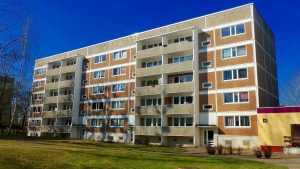 We are detecting sounds all the time in everything around us. Even when we think we are surrounded by absolute silence, there is still plenty happening in the background that is simply below the volume level a human ear can properly detect. Noise monitoring and surveys in hampshire can help determine all the sources.
We are detecting sounds all the time in everything around us. Even when we think we are surrounded by absolute silence, there is still plenty happening in the background that is simply below the volume level a human ear can properly detect. Noise monitoring and surveys in hampshire can help determine all the sources.
Sounds are actually small variations in pressure and travels in sound waves that can be carried through gasses, liquids or solids. These sound waves ripple into the ears and are then amplified and converted into an electrical signal that can be interpreted in the brain into something we recognise or understand.
Sound is measured in decibels and is one of the primary senses that allow humans and other animals to navigate our surroundings. While there is so much pleasure derived from hearing, it can also be overloaded to the point of discomfort and even pain. Noise pollution is a problem in our modern era and taking the time to control noise levels in the places we work and live is essential to mental and physical health.
What Is Structure Borne Sound?
A sound will become a “structure borne sound” when its transmission medium is a solid structure. Unlike many sounds that are conveyed directly through the air, structure borne sounds will travel through the steel, concrete and wooden structural elements of a building.
Some structure borne sounds include the footsteps of your neighbour upstairs or the pounding of doors being slammed shut. Each of these noises represents vibrations transmitted through the structures of the floors and walls and are being scattered throughout the building.
Understanding the Five Processes of Structure Borne Sound
There are five processes that go into the generation and transmission of structure borne sound:
1. Generation – the original source of the oscillation.
2. Transmission – begins when oscillatory energy is transferred from the source to the structure of the building.
3. Propagation – describes the mechanism essential to scattering energy through the building.
4. Attenuation – as the sound waves move through solid materials their vibrations are reflected off their ends and this dampens their energy and diminishes sound.
5. Radiation – after the sound has passed through the solid material it will be emitted again as air borne sound or more structurally borne sound.
Why Is Structure Borne Sound Important?
The primary cause for disputes among neighbours and a considerable cause of discomfort and wellness in everyday life is unwanted disturbing levels of noise. Considering this, it is important to minimise the risks of structurally borne sound when designing and renovating commercial and domestic buildings.
To this end, the government has issued the Building Regulations Approved Document E ‘Resistance that lays out the minimum standards for sound dampening insulation for the interior and exterior of the building. These guidelines do not apply just for homes, but also schools and offices. These precise criteria have been set in place to reduce the noise produced and transmitted throughout buildings.
How Is Structure Borne Sound Measured?
Impact sounds transmission must be measured on-site and uses a steel-faced tapping instrument that strikes the surface being measured. In the adjacent space the sound will be received and measured in decibels. This is not completely accurate, because it does not consider the huge variety of noises that could be deployed through the structure.
Therefore, several plans to reduce structure borne sound must be applied.
Methods to Reduce Structure Borne Sound
The way to hamper structural borne sound is to dampen the vibrations transmitted from the source of the noise. Here are some ways that this can be accomplished:
• Carpets and padding – your wooden and laminate floors probably look beautiful, but they also carry sounds from impacts easily. Laying out some carpets will help to dampen the noise.
• Resilient underlay – These are typically made of a rigid fiberglass, but there are many options made from rubber or foam. The idea will work the same way to carpets or padding.
• Soundproofing compounds – these soundproofing compounds are installed between rigid structures to minimise the passage of sound.
• Create a gap – another good way to reduce structure borne sound is to create a space between solid structures. This can be done by adding a secondary structure such as a raised floor or a suspended ceiling. These help to break the immediate contact and reduce the sound to and from neighbouring spaces. High mass structures will often include structural gaps and off set spaces to accomplish this.
• Install anti-vibration solutions – you can also install anti-vibration mounts, like sound clips and structural hangers that also reduce noise transmission.
